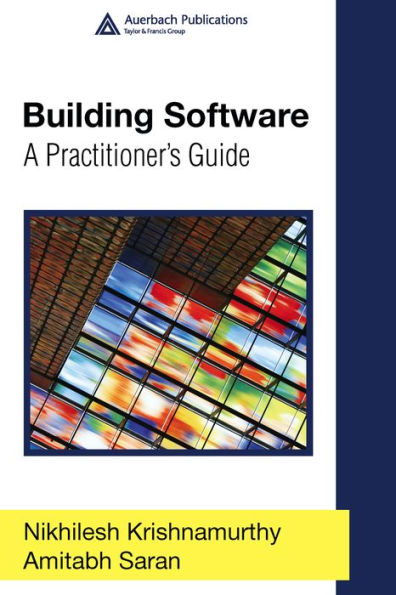Novel in its approach to software design, development, and management, Building Software: A Practitioner's Guide shows you how to successfully build and manage a system. The approach the authors recommend is a simple, effective framework known as Solution Engineering Execution (SEE).
Through SEE, you create a successful solution by following a highly organized, well-planned process. This process makes you view the solution from a holistic, systematic perspective.
Developing a successful system requires that you are able to address technology matters related to architecture, design, selection, integration, and security. Building Software: A Practitioner's Guide offers insight into how to make software reliable and how to ensure it meets customer and organizational needs.
Using the above approach you are able to:
- Find a good solution to the problem at hand
- Focus on engineering the solution well
- Address all aspects of delivery associated with the solution
The book provides insightful examples of cross-domain and legacy solutions that allow you to overcome common software concerns such as requirement issues, change control, quality and schedule management, and internal and external communication problems.
Novel in its approach to software design, development, and management, Building Software: A Practitioner's Guide shows you how to successfully build and manage a system. The approach the authors recommend is a simple, effective framework known as Solution Engineering Execution (SEE).
Through SEE, you create a successful solution by following a highly organized, well-planned process. This process makes you view the solution from a holistic, systematic perspective.
Developing a successful system requires that you are able to address technology matters related to architecture, design, selection, integration, and security. Building Software: A Practitioner's Guide offers insight into how to make software reliable and how to ensure it meets customer and organizational needs.
Using the above approach you are able to:
- Find a good solution to the problem at hand
- Focus on engineering the solution well
- Address all aspects of delivery associated with the solution
The book provides insightful examples of cross-domain and legacy solutions that allow you to overcome common software concerns such as requirement issues, change control, quality and schedule management, and internal and external communication problems.

Building Software: A Practitioner's Guide
384
Building Software: A Practitioner's Guide
384Related collections and offers

Product Details
| ISBN-13: | 9781420013511 |
|---|---|
| Publisher: | CRC Press |
| Publication date: | 09/07/2007 |
| Series: | Applied Software Engineering Series |
| Sold by: | Barnes & Noble |
| Format: | eBook |
| Pages: | 384 |
| File size: | 6 MB |
